Chapter: Microprocessor and Microcontroller
Interfacing Memory Chips With 8085
INTERFACING MEMORY AND I/O DEVICES WITH 8085
The programs and data that are executed by the microprocessor have to be stored in ROM/EPROM and RAM, which are basically semiconductor memory chips. The programs and data that are stored in ROM/EPROM are not erased even when power supply to the chip is removed. Hence, they are called non-volatile memory. They can be used to store permanent programs.
In a RAM, stored programs and data are erased when the power supply to the chip is removed. Hence, RAM is called volatile memory. RAM can be used to store programs and data that include, programs written during software development for a microprocessor based system, program written when one is learning assembly language programming and data enter while testing these programs.
Input and output devices, which are interfaced with 8085, are essential in any microprocessor based system. They can be interfaced using two schemes: I/O mapped I/O and memory-mapped I/O. In the I/O mapped I/O scheme, the I/O devices are treated differently from memory. In the memory-mapped I/O scheme, each I/O device is assumed to be a memory location.
INTERFACING MEMORY CHIPS WITH 8085
8085 has 16 address lines (A0 - A15), hence a maximum of 64 KB (= 216 bytes) of memory locations can be interfaced with it. The memory address space of the 8085 takes values from 0000H to FFFFH.
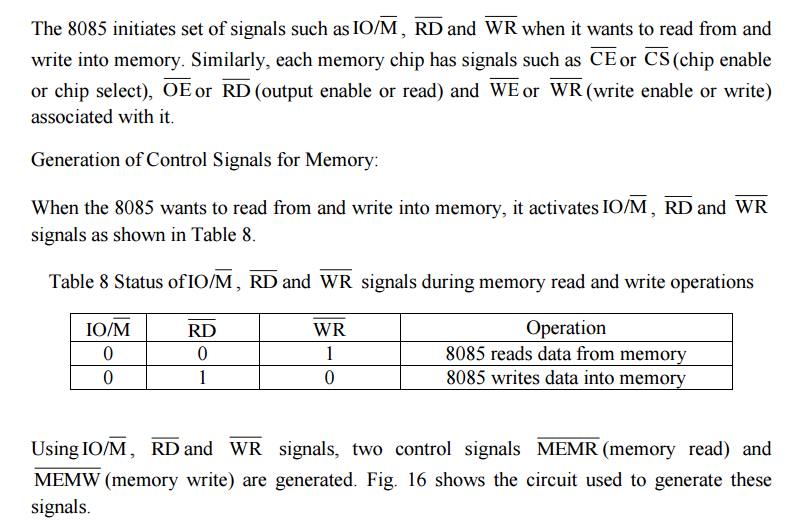
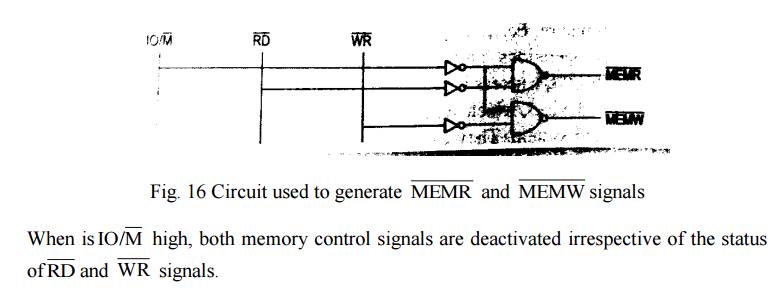
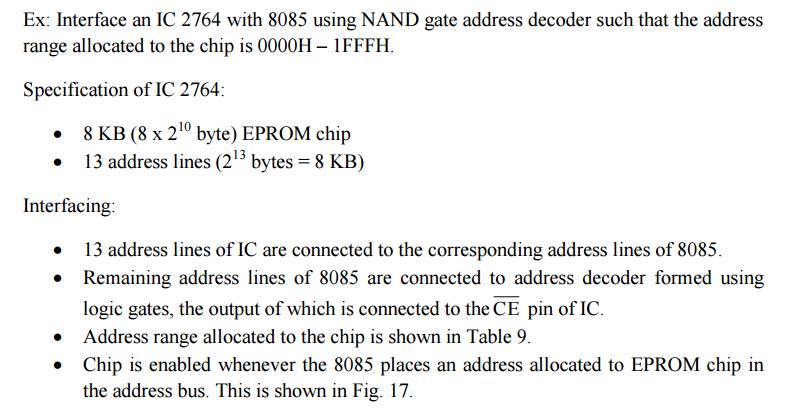

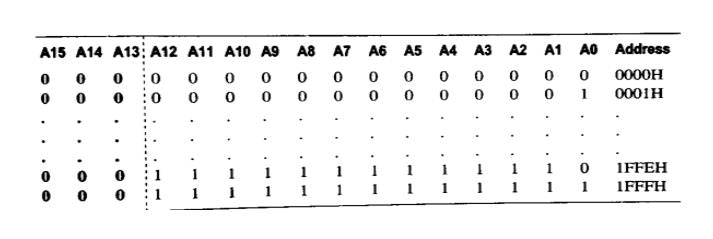
Ex: Interface a 6264 IC (8K x 8 RAM) with the 8085 using NAND gate decoder such that the starting address assigned to the chip is 4000H.
Specification of IC 6264:
· 8K x 8 RAM
· 8 KB = 213 bytes
· 13 address lines
The ending address of the chip is 5FFFH (since 4000H + 1FFFH = 5FFFH). When the address 4000H to 5FFFH are written in binary form, the values in the lines A15, A14, A13 are 0, 1 and 0 respectively. The NAND gate is designed such that when the lines A15 and A13 carry 0 and A14 carries 1, the output of the NAND gate is 0. The NAND gate output is in turn connected to the ^(CE1) pin of the RAM chip. A NAND output of 0 selects the RAM chip for read or write operation, since CE2 is already 1 because of its connection to +5V. Fig. 18 shows the interfacing of IC 6264 with the 8085.
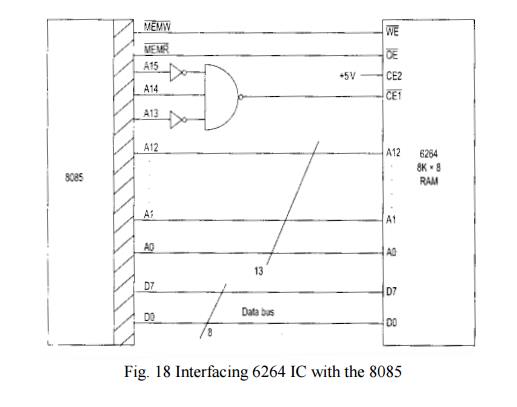
Ex: Interface two 6116 ICs with the 8085 using 74LS138 decoder such that the starting addresses assigned to them are 8000H and 9000H, respectively.
Specification of IC 6116:
· 2 K x 8 RAM
· 2 KB = 211 bytes
· 11 address lines
6116 has 11 address lines and since 2 KB, therefore ending addresses of 6116 chip 1 is and chip 2 are 87FFH and 97FFH, respectively. Table 10 shows the address range of the two chips.
Table 10 Address range for IC 6116
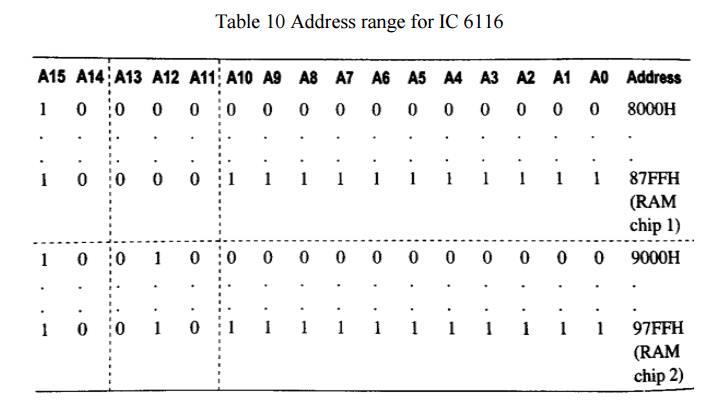
Interfacing:
· Fig. 19 shows the interfacing.
· A0 – A10 lines of 8085 are connected to 11 address lines of the RAM chips.
· Three address lines of 8085 having specific value for a particular RAM are connected to the three select inputs (C, B and A) of 74LS138 decoder.
· Table 10 shows that A13=A12=A11=0 for the address assigned to RAM 1 and A13=0, A12=1 and A11=0 for the address assigned to RAM 2.
· Remaining lines of 8085 which are constant for the address range assigned to the two RAM are connected to the enable inputs of decoder.
· When 8085 places any address between 8000H and 87FFH in the address bus, the select inputs C, B and A of the decoder are all 0. The Y0 output of the decoder is also 0, selecting RAM 1.
· When 8085 places any address between 9000H and 97FFH in the address bus, the select inputs C, B and A of the decoder are 0, 1 and 0. The Y2 output of the decoder is also 0, selecting RAM 2.
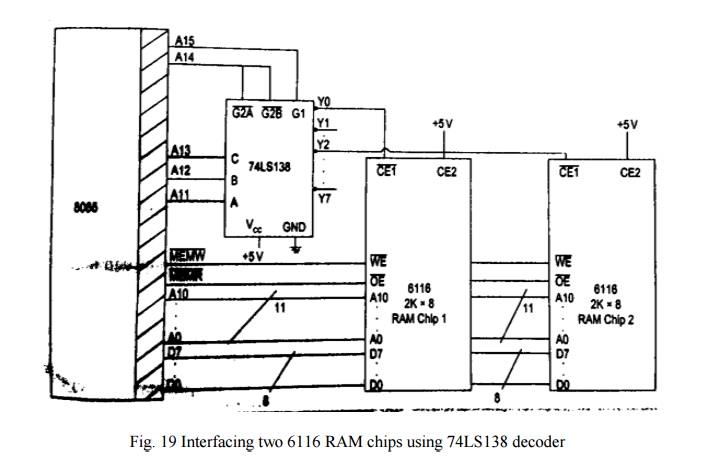
Related Topics